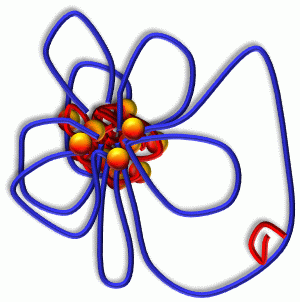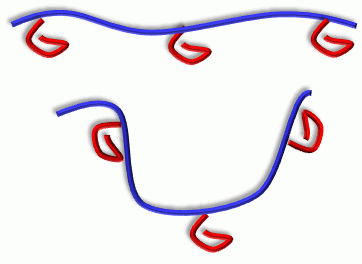The binding of the drug to the micelles described above is not very strong and the micelles normally dissociate when the bulk polymer concentration is below the CMC. This can be viewed as a disadvantage in some applications. If a stronger binding is required, the hydrophobic drug can be chemically attached to a hydrophilic linear polymer, as a side chain. Such a structure is known as a prodrug or polysoap. In an aqueous solution, the sid

e chains containing drug form the core of the micelle, while the

hydrophilic main chain forms the corona, mostly comprising loops. Such an aggregate is more stable than the simple micelle and does not release the drug until a chemical signal is given, for example, enzymatic degradation of the main chain at the target site. Since the only existing models are phenomenological models of polysoaps, the
SCMFT method provides an important alternative that promises to give new and detailed information out of the reach for current capabilities.
